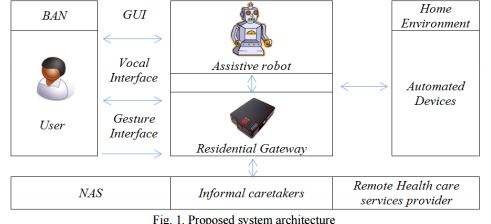First of all, we want to thanks, everyone who vote for bootstrap our idea! We appreciated the fact that you like our project, and to be honest, we are extremely excited to begin this journey.
We know that the fifth challenge of the HackadayPrize2016 started the 22 of August of this year, we did not start to write logs until discussing the scope of the project, the different tasks that we face and distribute this tasks to each member of the team Brainmotic.
To begin with the logs, we want to talk a little bit about how born Brainmotic. We are always fascinated how the technology tries to improve the quality of people's lives. One day, we started to talk about how technology could help people with disabilities. We searched what kind of assistive technology exists for, and we found an excellent article that will guide us, it's called: "Designing assistive technology for domotic systems." of Virginia Sāndulescu were the author "presents the state of the art in assistive domotic systems and the considerations that need to be taken in designing this type of systems." In the discussing article, the author proposes a system architecture of how should work this kind of system. In the next figure, we can see it.
Author: [1]
The user for communicated his wish to either an assistive robot or residential gateway that will help him with the home environment makes use of a GIU, vocal interface or gesture interface.
We read about the gesture control interfaces, and we thought what about the EEG for move in a UI, that UI will control some common areas in a house.
So this UI has to be user-friendly with the people with disability,
We search about the domotic software licensed as open software, and the aim is to modify the software to be used by a person who has a disability. I forgot to, and we like a lot the movie The Good, the Bad and the Ugly; for this reason, we will talk about how good we have found in the software, the bad and the ugly of each:
Misterhouse: web page: http://misterhouse.sourceforge.net
The good: the software facilitates communications through the X10 protocol. The bad: the interface has many buttons with which the user can interact and be difficult to attach to a BCI (Brain Computer Interface). The Ugly: we need to learn X10 and we have little time to implement a software.
Domoticz: web page: http://sourceforge.net/projects/domoticz/:
Tthe good: the software can run on the Raspberry. The bad: the interface has many buttons with which the user can interact and be difficult to attach to a BCI. The Ugly: it is a relatively complex interface to modify graphically.
Openhab: web page: http://www.openhab.org
The good: is software that does not depend on a manufacturer, protocol or hardware technology. The bad: the software is not geared for use by people with total paralysis. The ugly: the user interface is dirty, about the number of elements in this.
Finally, we want to emphasize the following software:
Loxone: it is a suite of services, from hardware to software, the interface is simple but still functional.
Homedaemon: web page: http://www.denninger.net/homedaemon.htm:
It is interesting to use because it is a custom system, the software is developed in C, but requires the use of devices with the X10 protocol.
All software found seeks to respond to the functions of a house, but we could not find software that "thinks" of the simplicity to use and it is also oriented to the use of people with disabilities.
At this moment, we are going to start to upload all the logs, instructions, and images of this project. It's been a real challenge for us to achieve it and we hope you like it. We want to apologize because we have started to rise late check-ins, but, we promise will be exciting logs, nothing more to say, may the force be with us!.
[1] SĂNDULESCU V., “Designing assistive technology for domotic systems,”, ISSN 2286-3540 , U.P.B. Sci. Bull., Series C, Vol. 77, Iss. 4, 2015
 Daniel Felipe Valencia V
Daniel Felipe Valencia V
Discussions
Become a Hackaday.io Member
Create an account to leave a comment. Already have an account? Log In.